Street Art Detector: Connecting Global Street Art Enthusiasts
In the vibrant world of street art, where every alleyway or brick wall can be a canvas, there existed a distinct need for an innovative solution that would connect enthusiasts from all corners of the globe. GMI Software collaborated with a client who envisioned a mobile application that would serve as a conduit for this passion, thus giving birth to the Street Art Detector app. This ground-breaking application was aimed at not just discovering art, but also fostering a community fascinated by graffiti, murals, stickers, and more.
Table of content
Table of Contents
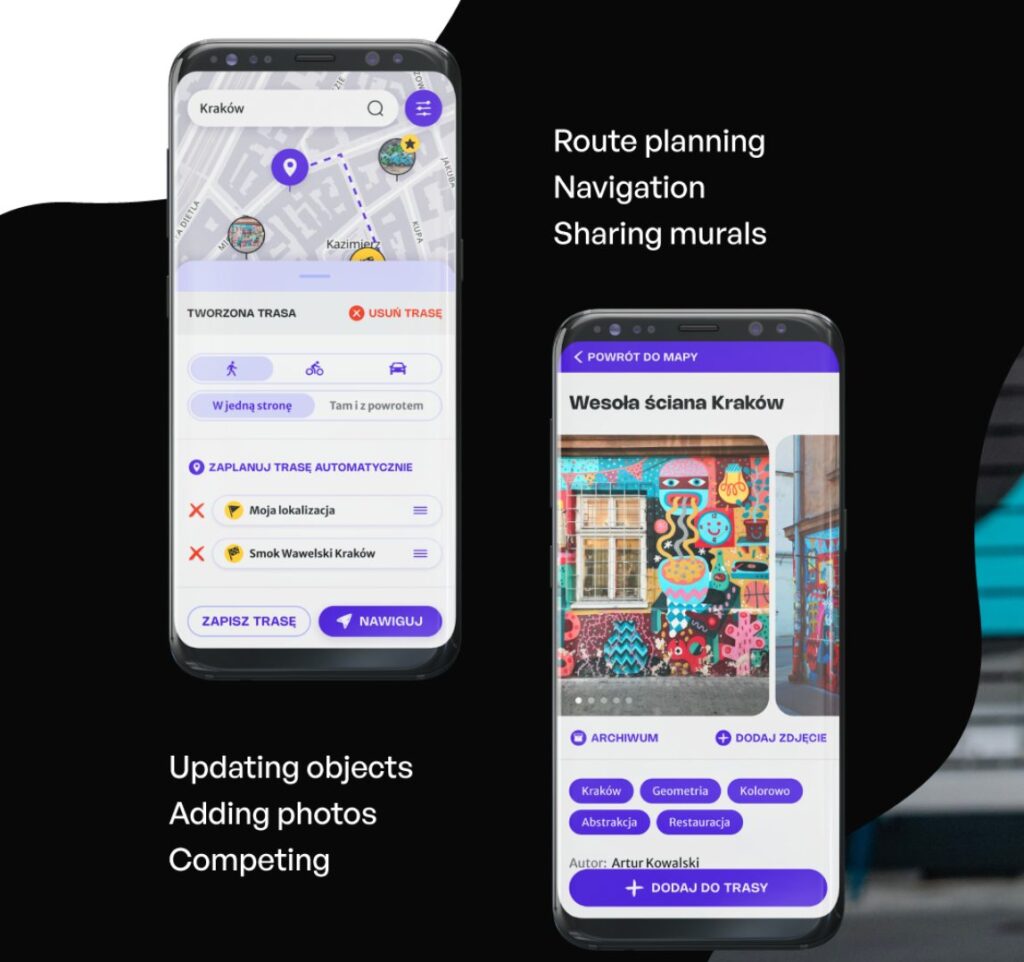
In the vibrant world of street art, where every alleyway or brick wall can be a canvas, there existed a distinct need for an innovative solution that would connect enthusiasts from all corners of the globe. GMI Software collaborated with a client who envisioned a mobile application that would serve as a conduit for this passion, thus giving birth to the Street Art Detector app. This ground-breaking application was aimed at not just discovering art, but also fostering a community fascinated by graffiti, murals, stickers, and more.
The vision was a tool that would navigate users through unfamiliar locales, guiding them to captivating art installations just around the corner. With an explorer ranking system and features that allowed users to add their own discoveries, the application was poised to create an exciting social platform centered around street art.
Understanding the Challenge
Any innovative project comes with its set of challenges that require strategic thinking and problem-solving abilities. The development of the Street Art Detector app was no exception. The team at GMI Software was confronted with several challenges, from creating an artful user interface to developing advanced location-detection features. Understanding these challenges was the first step towards finding solutions. The following sections detail the key challenges encountered during the development process and how the team strategized to overcome them.
Designing an Artful User Interface
A fundamental challenge for GMI Software was to create a user interface that was a digital reflection of the vibrant world of street art. The design had to be stylish and representative of the community’s ethos, but also lightweight, ensuring a smooth user experience across a variety of devices. Striking this delicate balance was no easy feat, but it was a challenge the team was ready to embrace.
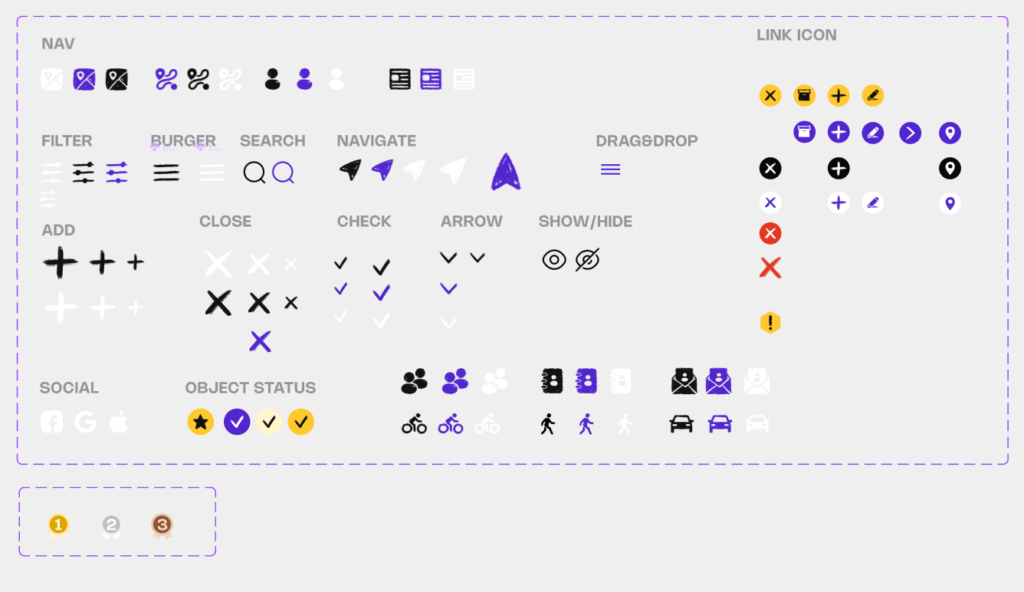
Detecting Street Art Locations with Precision
The application’s core functionality was another significant hurdle. Street art is not confined to galleries or predictable locations; it can spring up in the most unexpected corners of cities and towns. As such, the app needed a robust, accurate mechanism for identifying these locations. The team aimed to integrate a feature that could support saving locations based on the metadata stored in user-uploaded photos, ensuring the veracity of the location indicated by users.
Ensuring a Seamless User Experience
The Street Art Detector app is heavily reliant on map-based user interaction. Transitioning from the map to other views and back again needed to be a seamless process to ensure users didn’t feel disoriented. Crafting this fluid user interface presented a unique challenge that required thoughtful UX design.
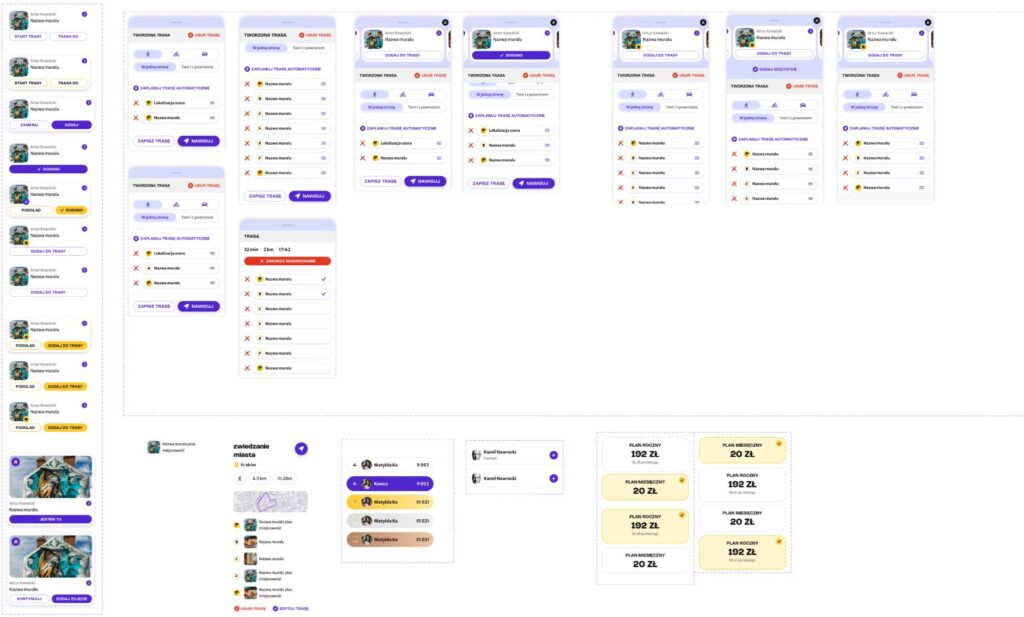
Managing Multilingual Tags within the MVP
Supporting multilingual tags, while keeping the MVP simple and budget-friendly, added a layer of complexity to the project. The team needed to carefully strategize the best approach to accommodate this feature, without overcomplicating the system or overshooting the budget.
Each of these challenges demanded not just technical expertise but also creative problem-solving. GMI Software took a collaborative approach with the client, ready to tackle each hurdle head-on and transform the vision for the Street Art Detector app into a reality.
The Project Team & Their Roles
The successful completion of any project relies heavily on the combined effort and synergy of the team involved. Each team member plays a crucial role, and their individual skills contribute to the project’s success. The team behind the Street Art Detector app was composed of individuals whose diverse roles and expertise allowed them to surmount numerous challenges and produce an application that has now become an asset for street art enthusiasts worldwide. Let’s delve into the key roles within the project team and how they shaped the Street Art Detector app.
Virtual Chief Technology Officer (vCTO)
The vCTO took a leadership role in the project, steering the technical direction of the application, and ensuring all technical solutions aligned with the project’s strategic goals. They also played a crucial role in decision-making, addressing technical challenges, and maintaining the project’s focus on value delivery.
UI/UX Designer
The UI/UX Designer was tasked with one of the project’s main challenges – designing a user interface that would resonate with the artistic nature of the app while ensuring user-friendliness. They created an intuitive design and an engaging user experience, focusing on smooth navigation and visual appeal that mirrored the vibrant world of street art.
Full Stack Developer
The Full Stack Developer was a linchpin in the project, working on both the front-end and back-end of the application. They implemented essential features, such as multilingual tags, and integrated various APIs, ensuring the system’s smooth functionality. Their expertise was critical in building a robust app that met the project’s business and technical requirements.
Mobile Developer
The Mobile Developer focused on translating the design and functionality into a seamless mobile experience. They tackled platform-specific challenges for iOS and Android, ensuring that the application was optimized for performance, user experience, and aligned with the guidelines of both platforms.
Each team member brought a distinct set of skills to the table, and their roles were interdependent. Their collaboration was fundamental to the project’s success, bringing the Street Art Detector app from concept to a functional, engaging platform for street art enthusiasts worldwide.
Solution Development: Building the Street Art Detector App:
As the team at GMI Software embarked on the journey of building the Street Art Detector app, a roadmap was needed to guide the development process. This roadmap took the form of specific user stories, which offered a glimpse into the end users’ needs, desires, and expectations from the application. Focusing on these user stories ensured that the final product resonated with its users and met the objectives of the project. The following sections delve deeper into these user stories and how they influenced the development process and the resulting application.
Designing a Vibrant Yet User-Friendly Interface
From the perspective of the users, the application’s visual design was crucial. This was summed up in the user story: “As a user, I want an application that is visually appealing and echoes the vibrant world of street art, while also being intuitive and easy to navigate.” The UI/UX designer was instrumental in making this a reality, designing a stylish yet lightweight interface that captured the essence of street art without compromising usability.
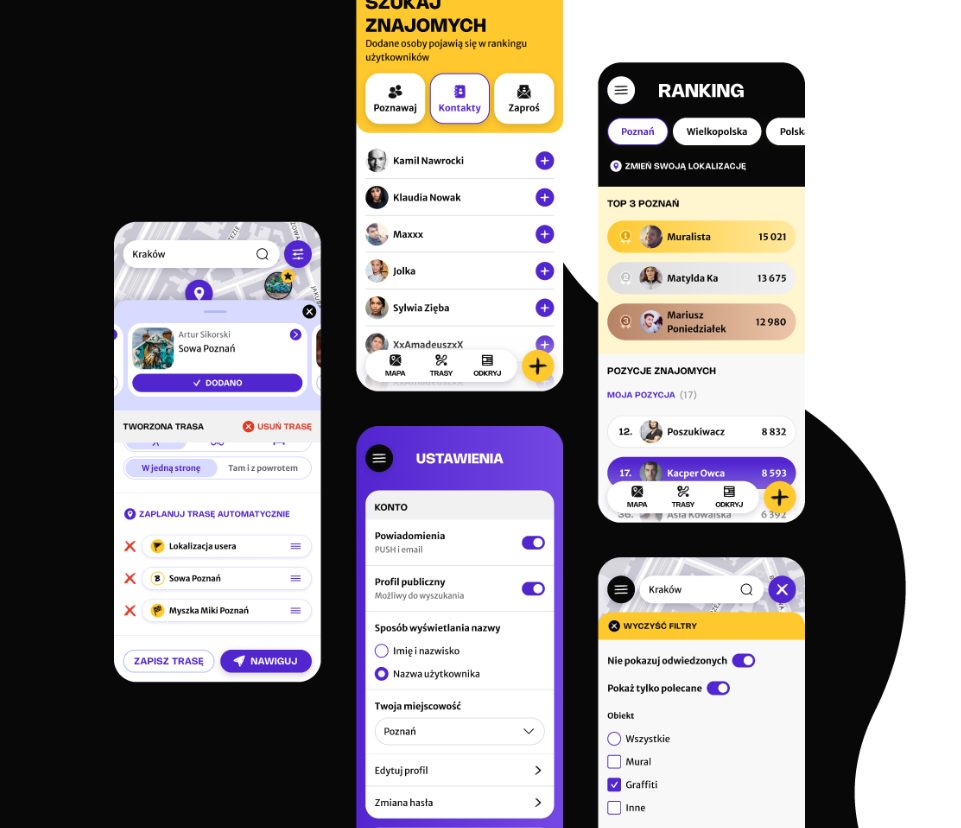
Creating an Engaging User Journey
The team prioritized user engagement throughout the app development process. Users wanted a seamless registration process, “As a guest, I want to have various options like email, Facebook, and Google for creating an account.” They also desired a smooth navigation experience, “As a user, I want to easily navigate the application using the main menu.” The developers worked to implement these features, creating an engaging journey from the moment a user joined the platform.
Enhancing User Interaction with Map and Navigation Features
The map feature was a vital part of the application’s core functionality. Users wanted to easily locate street art, “As a user, I want to see my current location on the map,” and “As a user, I want to see pointers on the map that indicate the locations of street art.” Moreover, they wanted flexibility in planning their routes, “As a user, I want to add and remove a given point from my route from the map.” The developers effectively integrated these features, providing users with an intuitive way to explore street art in various locations.
Building a User-Centric Platform
The user story, “As a user, I want to add an object using a photo from my gallery or by taking a photo with my camera,” emphasized the desire for user-generated content. Another key user story was, “As a user, I want to mark a place as visited from the object preview level.” This necessitated features that allowed users to interact with the app actively and personalize their experiences. The team developed these features, encouraging user participation and fostering a sense of community within the app.
Gamification for Enhanced Engagement
The user story, “As a user, I want to earn points and climb up the explorer ranking for adding new objects to the application,” indicated a desire for a more interactive experience. The developers integrated a gamification system, including an explorer ranking, that added a fun and competitive dimension to the app, enhancing user engagement.
Comprehensive Back Office Functionality
For the efficient management and moderation of user-generated content, the team developed a robust back office. Admins wanted easy access, “As an admin, I want to log into the admin panel.” They also needed comprehensive control over the platform, “As an admin, I want to manage objects in a simplified way (CRUD)” and “As an admin, I want to moderate objects.” The developers built these functionalities, providing admins with the tools necessary for effective platform management.
The integration of these user stories into the development process ensured that the final application was not only technically sound but also user-focused and engaging, catering to the needs of both the users and the administrators.
Overcoming Technical Challenges:
In the world of software development, technical challenges are par for the course. These hurdles often necessitate innovative thinking, strategic problem-solving, and a deep understanding of technologies. The Street Art Detector app brought its own unique set of technical challenges that the team at GMI Software had to overcome. Let’s delve into these challenges and understand how the team navigated this technical labyrinth to deliver a successful solution.
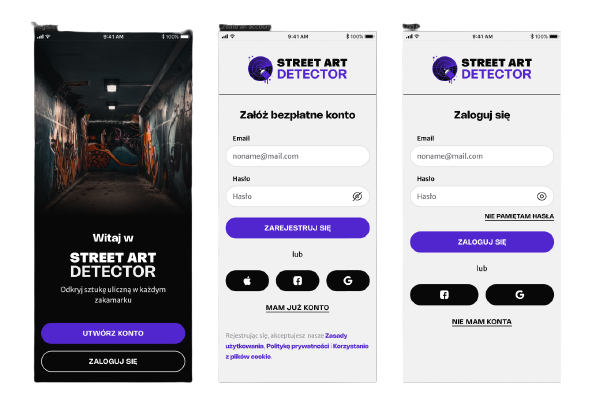
Implementing Art Location Detection
One of the primary technical challenges the GMI Software team faced was the development of a system capable of accurately identifying and saving the locations of street art based on photo metadata. The ability to check whether a photo was taken at the indicated location was crucial to maintain the authenticity of user contributions. Overcoming this hurdle involved a deep understanding of the EXIF metadata stored in photographs and developing a feature that could read and interpret this data effectively. The team managed to successfully implement this feature, enhancing the app’s credibility and providing a layer of verification for user contributions.
Navigating the Map-View Conundrum
The significant reliance on map-based user interaction presented a unique user experience challenge. The transition from map views to other views had to be seamless and intuitive, preventing users from feeling lost. The team tackled this by focusing on the user journey, experimenting with different design concepts, and conducting extensive user testing. Through iterative improvements, they managed to create a cohesive and fluid interface that allowed for easy navigation.
Managing Multilingual Tags
Adding a layer of complexity to the project, the client required support for multilingual tags within the app. Ensuring this feature was integrated without overwhelming the Minimal Viable Product (MVP) or overshooting the budget required careful planning and execution. The team adopted a strategic approach to implement this feature, making thoughtful decisions about tags and languages to prevent the introduction of excessive complexity. By continuously liaising with the client, they maintained a balance, ensuring that the MVP remained streamlined while still supporting multilingual tags.
These technical challenges tested the team’s problem-solving capabilities, but with a collaborative approach, innovative thinking, and technical prowess, GMI Software successfully navigated these hurdles. Their ability to address and overcome these challenges ensured the delivery of a feature-rich, user-friendly application that met all the client’s requirements, adding to their reputation as a reliable and resourceful software development partner.
Technology Stack and Its Impact:
The selection of the right technology stack plays a pivotal role in the success of any software project. These choices directly impact the performance, scalability, and overall quality of the final product. For the Street Art Detector app, the team at GMI Software carefully curated a technology stack that aligned with the project’s requirements. This section will take you through the technologies chosen for this project and how they influenced the development process and the resulting application.
The Power of Node.js and Nest.js
The back-end of the Street Art Detector app was built using Node.js and Nest.js, popular choices for their scalability, performance, and efficient handling of asynchronous tasks. These technologies enabled the creation of a robust back-end system capable of handling complex tasks, such as managing user data, facilitating interactions with the database, and supporting the intricate functionalities of the app.
React Native for Mobile Development
The choice of React Native for mobile development enabled the creation of a highly responsive user interface. Known for its efficiency and versatility, React Native allowed the team to write once and use everywhere, resulting in significant time savings and consistency across iOS and Android platforms. The use of this technology enabled the team to swiftly implement updates and ensure that the app remained optimized for performance on both platforms.
PostgreSQL for Robust Data Management
PostgreSQL, an open-source relational database, was the technology of choice for managing data. Known for its advanced features and ability to handle a vast range of data types, PostgreSQL allowed the team to store and manage complex user and art location data effectively. Its robustness and reliability ensured that the data remained secure and accessible, supporting the app’s various functionalities seamlessly.
The choice of technology stack had a profound impact on the development and eventual success of the Street Art Detector app. Each technology was selected for its specific advantages and the way it facilitated the project’s objectives. The team’s expertise in these technologies ensured that they could maximize their benefits, leading to an application that not only met but exceeded the client’s expectations. The success of this project stands testament to GMI Software’s proficiency in utilizing the right technologies to turn a client’s vision into a successful digital solution.
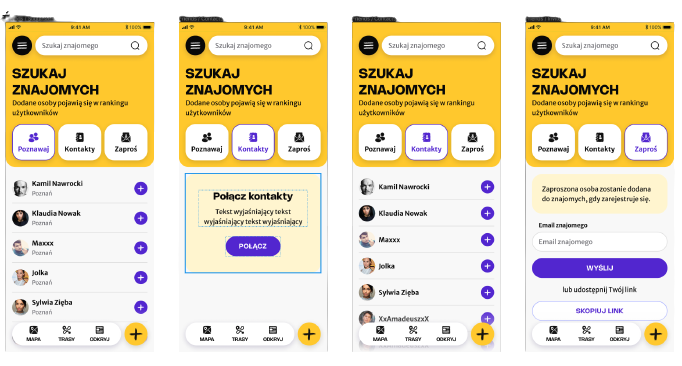
Project Results and Achievements
The successful development and launch of the Street Art Detector app marked a significant achievement for GMI Software and their collaboration with the client. The application, visible at Street Art Detector, stands as a testament to the team’s hard work, innovative thinking, and technical prowess.
Delivering a User-Centric Application
The finished app, with its vibrant yet user-friendly interface, allows street art enthusiasts worldwide to discover, share, and connect over their love for art. Users can navigate unfamiliar locales with ease, discover new art installations, add their own findings, and engage with a global community of like-minded individuals.
Fostering an Engaging User Experience
The app’s gamification elements and social connectivity features, such as the explorer ranking and friend referrals, have encouraged user engagement and interaction. The ability for users to contribute to the app’s content has fostered a sense of ownership and community within the platform.
Providing a Reliable and Accurate Art Location Detection
The innovative feature that identifies and verifies the locations of street art using photo metadata has proved invaluable in maintaining the authenticity of user contributions. This technical accomplishment not only enhanced the credibility of the app but also set a benchmark in user-generated content verification.
Enhancing Multilingual Accessibility
The application’s support for multilingual tags ensured that it reached a global audience, breaking language barriers, and making it more accessible. The effective management of this feature within the MVP demonstrated GMI Software’s ability to balance complexity with budget constraints.
The Street Art Detector app, through its seamless user interface, innovative features, and engaging user experience, has left a significant impact on the street art community worldwide. Its success is a testament to GMI Software’s collaborative approach, technical expertise, and commitment to delivering value to clients.
Conclusion
The journey of the Street Art Detector app, from concept to reality, is a testament to the power of collaboration, innovative thinking, and technical expertise that GMI Software brings to its projects. Despite facing numerous challenges, from designing a visually appealing yet user-friendly interface to implementing complex location-detection features, the team consistently found solutions that not only solved the problems but enhanced the user experience.
The successful implementation of the multilingual tags within the MVP showcased GMI Software’s ability to navigate complexity while maintaining focus on the project’s goals and budget constraints. The resulting application, now serving street art enthusiasts worldwide, stands as a testament to the team’s hard work and dedication. If you’re looking for a partner for a similar project, GMI Software’s journey with the Street Art Detector app is a compelling demonstration of their capabilities and commitment to delivering successful solutions.


